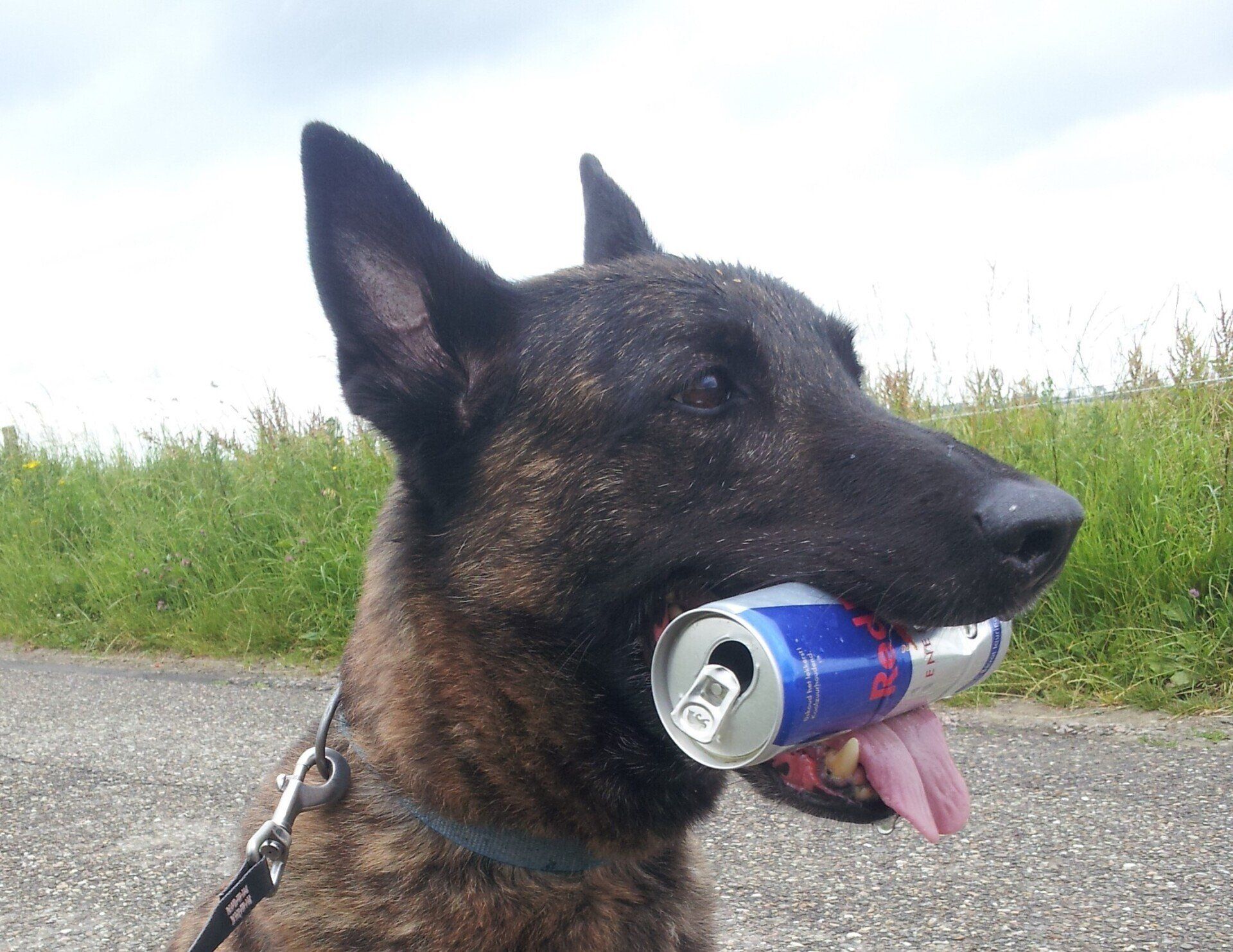The personal story of Rico and Mika
Is the tick and flea remedy Bravecto safe?
No, absolutely not! Your vet will probably tell you it is safe, even in pregnant bitches (that is what we were told).
But the truth is quite different, namely that worldwide very many very serious side effects of Bravecto have been reported (including the death of many dogs and cats). None of these serious side effects are mentioned on the package insert of “Bravecto”. It seems that our furry friends are simply being used as guinea pigs.....
This website was started in memory of my dog "Rico" and all the other dogs and cats who did not survive this toxic "medication", and to warn you as a dog or cat owner....
Tell all your friends about the true story of Bravecto!

In short, the story of Rico and Mika and the poison pill "Bravecto":
Rico was a healthy, lively, life-loving dog. To protect him and his buddy Mika from the risk of tick bites on holiday in Spain, we gave them the drug “Bravecto” (produced by MSD/MERCK) on the advice of our vet.
We (unfortunately) completely trusted the advice of our vet that it is a safe remedy, so we gave Rico and Mika the so-called “Tasty chewable tablet”.
But instead of protecting him, the drug poisoned his body, and within 4 weeks it cost him his life! Mika also had very serious side effects, but luckily he recovered.
And this has now also happened to many other dogs and cats worldwide........ * READ THE ENTIRE STORY AT THE BOTTOM OF THIS PAGE
Sign the International petition below to prevent many more dogs and cats from falling victim to the toxic insecticide BRAVECTO. This really has to stop!!
www.bravectopetition.org
* Already 134,563 signatories (March 25, 2024) *
The whole story of Rico and Mika
in by gifpil Bravecto
“Rico” was a vital, lively dog, who could easily cover considerable distances on walks.
On February 1, 2016, he and my other dog “Mika” were given the drug “Bravecto” to protect them against tick bites during our holiday in Spain.
Severe palpitations
On February 5th, both dogs had heart rhythm problems (arrhythmia), making a strange "gasping" sound for air. In retrospect, they had already had these symptoms before, when we had given them Bravecto in April 2015, before the holiday to France.
Upon arrival in Spain, Rico's health suddenly deteriorated rapidly. He could hardly walk ten meters, had severe heart palpitations, hung his head, stood with a sagging back and drooled considerably, panting, saliva dripping from his mouth. He also became unwell a few times. The following days we spared him as much as possible, and only took the necessary short walks. In this way, he seemed to be doing reasonably well again. Fortunately, he was still eating.
X-ray
On February 16, his health deteriorated again, so we decided to travel back to the Netherlands as soon as possible. Upon arrival in the Netherlands, we visited the vet the same day. Just like us, he also thought of the possibility of heart failure, and suggested taking an x-ray. To his great surprise, no abnormalities were visible in his heart, and his lungs were also fine. We began to hope that there was nothing serious going on after all.
Related to Bravecto?
Because of this unexpected outcome of the research, we expressed our suspicion that there might be a connection with the drug “Bravecto” (also because of the side effects that we had already seen in 2015). The vet did not consider this likely, and later expressed this by saying: “Bravecto is at the bottom of my list”. I still wonder what he actually based that conclusion on. We also asked him if he knew that this drug is a so-called “GABA antagonist”. The vet immediately denied that this was the case. However, upon checking, this turned out to be the case.
Side effect reported
I urged the vet to report (possible) side effects of the drug to the manufacturer (MSD/MERCK). In the meantime, Rico's health condition deteriorated rapidly and he developed a high fever of over 40 degrees. He had very fast, but remarkably shallow breathing (his abdominal muscles strangely did not participate in breathing).
The manufacturer offered to have Rico examined at their expense at a specialized clinic (with which they have “more connections”). His condition had already deteriorated to such an extent that he might not have survived the journey from Assen to Utrecht and back. For that reason we decided against it.
In the period from 18 to 24 February he still has the same very fast breathing, and fever. (especially at night above 40, during the day about 39.5 degrees). He now eats only small amounts with great difficulty, and loses a lot of weight.
From February 25 to 28, breathing has become calmer, and slowly but surely abdominal breathing is returning. The fever has disappeared.
Glimmer of hope
We get a small glimmer of hope, but on the other hand, walking (noticeably waddling due to coordination problems) is very difficult, it takes a lot of effort to walk further. After a few meters he stops, as if the batteries are empty. With a lot of stimulation he managed to walk a bit further at first, but that quickly became less. Especially in the evening walking is difficult (then he actually doesn't want to go outside anymore), his vision seems to deteriorate. He doesn't want to eat at all, loses weight and weakens.
Rico passes away
February 29, March 1 and 2, 2016 - “Rico” has no strength to stand for long, does not want to go outside anymore. He dies on March 2, 2016, one month after Bravecto......
A dog so lively, full of energy, that changes so quickly into a terminally ill dog and dies in such a short time, there must be something wrong!
We found out that many side effects have been reported of the now controversial tick/flea remedy Bravecto, including dogs that died after administration.
According to the Food and Drug Administration (USA), it is estimated that only 1% of adverse reactions in animals are actually reported to the authorities. So the official figures are probably just the tip of the iceberg…
Neurotoxin
Bravecto contains the active agent “fluralaner”. As I later learned, this is a poisonous insecticide that affects the central nervous system (neurotoxin) in ticks and fleas (but also in mammals). When this agent is sold by the vet, this is almost never mentioned. It has also become apparent that the vast majority of vets fail to provide a leaflet with the agent containing information about side effects and risks. And this while this is required by law! This agent is anything but safe. A poisonous insecticide does not belong in the body of your dog or cat!
US FDA Warnings
The American FDA (Food and Drug Administration) has been warning for several years about tick and flea products from the isoxazoline group (which includes Bravecto), for the risk of neurological side effects such as muscle tremors, ataxia and epileptic seizures.
"The FDA is alerting pet owners and veterinarians of the potential for neurologic adverse events in dogs and cats when treated with drugs that are in the isoxazoline class.
- Isoxazoline products have been associated with neurologic adverse reactions, including muscle tremors, ataxia, and seizures in some dogs and cats;
- Although most dogs and cats haven’t had neurologic adverse reactions, seizures may occur in animals without a prior history".
- Drugs in the isoxazoline class are:
- Bravecto (fluralaner) tablets for dogs
- Bravecto (fluralaner) topical solution for cats and dogs
- Bravecto Plus (fluralaner and moxidectin) topical solution for cats
- Bravecto 1-month (fluralaner) tablets for dogs
- Credelio (lotilaner) tablets for dogs and cats
- Nexgard (afoxolaner) tablets for dogs
- Nexgard Plus (afoxolaner, moxidectin, and pyrantel) chewable tablets for dogs
- Nexgard Combo (esafoxolaner, eprinomectin, and praziquantel) topical solution for cats
- Simparica (sarolaner) tablets for dogs
- Simparica Trio (sarolaner, moxidectin and pyrantel) tablets for dogs
- Revolution Plus (selamectin and sarolaner) topical solution for cats
* Note: Other newer brands of tick and flea products may also contain the same active toxins used in the above products.
https://www.fda.gov/animal-veterinary/animal-health-literacy/fact-sheet-pet-owners-and-veterinarians-about-potential-adverse-events-associated-isoxazoline-flea







